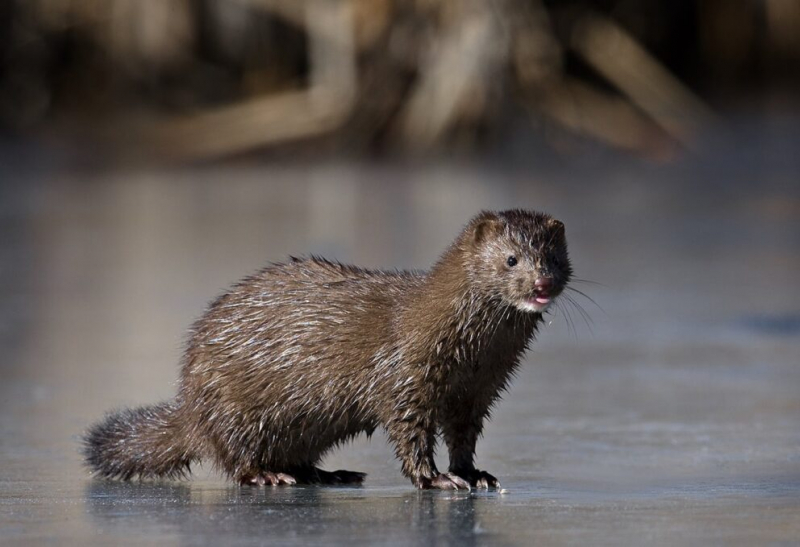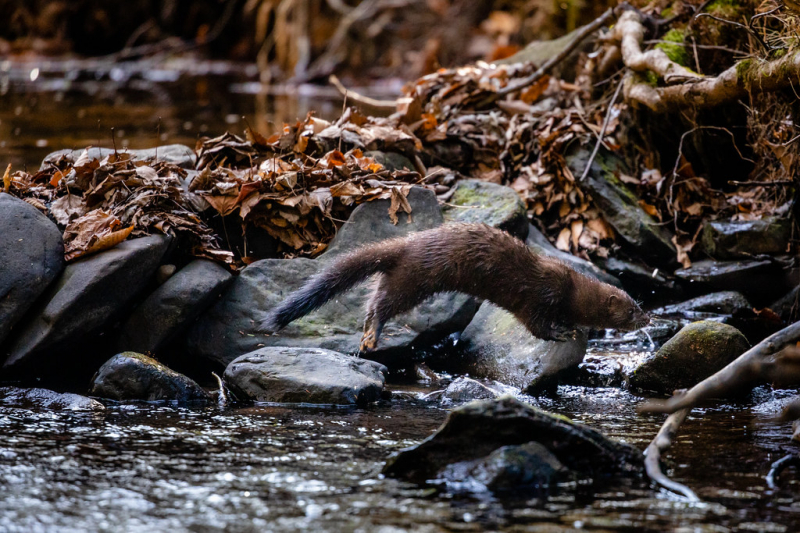American minks
The American minks are a mink species that was once confined to North America but has spread to portions of South America and Europe. They are closely related to the recently extinct Sea Minks (Neovison macrodon). These semi-aquatic animals are bigger and stronger than most other mustelids in terms of body size. Like martens, they have a big, bushy tail that has some taper. These minks' body weight changes seasonally, and the males are always heavier than the females.
The American mink may reach speeds of up to 6.5 km/h while moving on land. It can swim effectively and climb trees. The mink mostly uses its trunk to undulate when swimming to propel itself forward. It has bradycardia during diving, which is perhaps an adaptation for oxygen conservation. The American mink can swim for three hours in warm water without pausing, yet in cold water, it can expire in just 27 minutes.
Carnivores, American minks eat a range of creatures. They frequently hunt on mice, voles, marsh rabbits, squirrels, and muskrats among animals. Their food also includes birds including seagulls, cormorants, grosbeaks, and diapers. Frogs and tadpoles, fish, crabs, and water insects make up their secondary food.
















